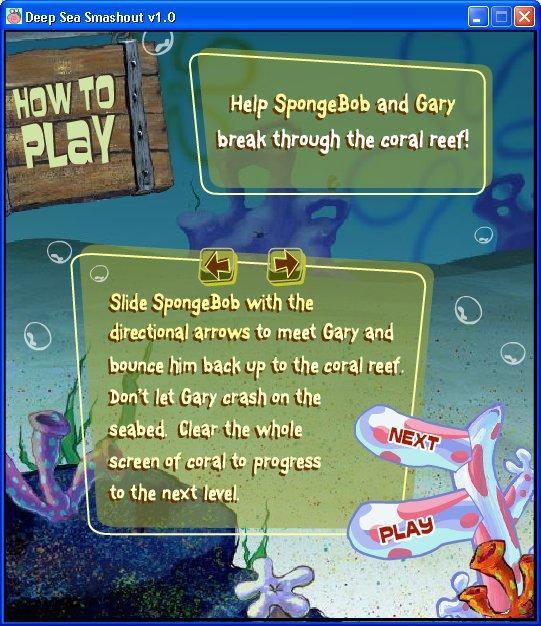


With each new dive, the NOAA builds knowledge and reveals further info about the seafloor. Previous NOAA expeditions have recorded various sponge and deep-sea coral communities at the bottom of the ocean.
#Spongebob sdeep sea smashout tv
Instead of living in the tropical-like city of Bikini Bottom depicted in the TV series, their actual environment more closely resembles the deep-sea trench shown in the show called Rock Bottom.ĭespite being hidden by a cloak of darkness, the Retriever Seamount is teeming with diverse sea life. Sea stars are carnivores and they are known to prey on sea sponges, crabs, oysters, clams, and coral, reports Christian Spencer for the Hill.īoth the starfish and sponge shown in the image live in a deep-sea habitat where no light penetrates. While Spongebob and Patrick are friends in the animated world, the relationship between sea stars and sponges is not as friendly in real life. They use their five arms riddled with mini suckers to scoot around the ocean floor. These sea stars can be various shades of pink or white. The starfish seen sitting idly by the sponge belongs to the genus Chondraster. Upon seeing the sponge, Mah was surprised to see its bright yellow hue because deep-sea creatures are usually orange or white to aid in blending into their environments, Insider reports. The yellow sponge seen on the Retriever Seamount belongs to the genus Hertwigia. However, none are square-shaped like the character SpongeBob. Sea sponges have called the ocean their home for the last 600 million years and consist of 8,500 different species, each varying in shape, color, and textures, reports Insider. "As a biologist who specializes in sea stars, most depictions of Patrick and SpongeBob are incorrect."

"I thought it would be funny to make the comparison, which for once was actually kind of comparable to the iconic images/colors of the cartoon characters," Mah tells Insider. REAL LIFE Sponge bob and Patrick! #Okeanos Retreiver seamount 1885 m /fffKNKMFjP- Christopher Mah July 27, 2021 *laugh* I normally avoid these refs.but WOW. Mah is a marine biologist at Smithsonian's National Museum of Natural History. A total of 25 ROV dive missions collected details on deep-sea coral, sponge communities, other marine life, and the underwater mountains.Īfter reviewing footage from the Retriever Seamount, starfish expert Christopher Mah spotted the sea sponge and sea star and quickly shared the image on Twitter. The team used ROVs to survey depths ranging from 820 to 13,124 feet below the surface. During the expedition, marine scientists-located both onshore and at sea-mapped the ocean floor and observed regions along with the New England and Corner Rise Seamounts for the first time. coast while aboard the research vessel Okeanos Explorer. NOAA designed the mission to obtain more data on the poorly studied deepwater areas off the eastern U.S. The ROVs are part of the National Oceanic and Atmospheric Administration's (NOAA) latest deep-sea project called the 2021 North Atlantic Stepping Stones: New England and Corner Rise Seamounts expedition. Scientists spotted the marine animals with a remotely operated deep-sea vehicle (ROV) as it zoomed around the Atlantic Ocean's Retriever Seamount, exploring the area's ecosystem, reports Aylin Woodward for Insider. Marine researchers exploring an underwater mountain off the United States' East Coast spotted a yellow sea sponge and pink sea star that resemble a certain SpongeBob SquarePants and Patrick Star, the iconic duo from the Nickelodeon cartoon series, "SpongeBob SquarePants."


 0 kommentar(er)
0 kommentar(er)
